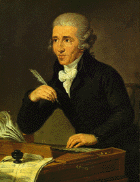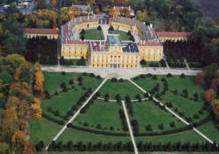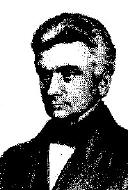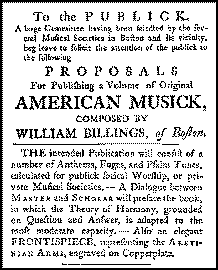2 Classical Composers
Haydn
 Franz Joseph Haydn (1732-1809) was born to poor parents on the border of Austria and Hungary. He was sent to St. Stephens Cathedral in Vienna to be a choir boy, but when his voice broke, he was thrown out of the choir and forced to make a living doing odd jobs and giving music lessons. He borrowed money to buy a used clavier and started giving keyboard lessons, as well as practicing and composing. In 1759 Count Morzin, a Bohemian nobleman, named Haydn music director of his chapel. Haydn wrote his first symphony there, and gained the attention of Prince Anton Esterhazy.
Franz Joseph Haydn (1732-1809) was born to poor parents on the border of Austria and Hungary. He was sent to St. Stephens Cathedral in Vienna to be a choir boy, but when his voice broke, he was thrown out of the choir and forced to make a living doing odd jobs and giving music lessons. He borrowed money to buy a used clavier and started giving keyboard lessons, as well as practicing and composing. In 1759 Count Morzin, a Bohemian nobleman, named Haydn music director of his chapel. Haydn wrote his first symphony there, and gained the attention of Prince Anton Esterhazy. 
Prince Esterhazy was a very powerful and wealthy man, and was devoted to music. His estate was enormous: there were 126 guest rooms, two theaters AND two large music rooms. For over thirty years Haydn stayed at Esterhazy's court, composing whatever music the Prince demanded. Two Operas and two long concerts were performed every week. In addition, special operas and concerts were given for notable quests, and the Prince enjoyed a daily chamber music concert in his private apartment, in which he often played. Haydn was cut off from the rest of the world, but in the security of the palace he was able to experiment - "I could make experiments, observe what strengthened and what weakened an effect and thereupon improve, substitute, omit and try new things". He was forbidden from selling or giving away any of his compositions, but by 1770 this rule was relaxed and he began writing music for patrons all over Europe.
On YouTube | Click here for closed captioned video | Click here if the video above is blocked | transcript of video
On YouTube | Click here for closed captioned video | Click here if the video above is blocked | transcript of video
In 1790 the Prince died and Haydn made extended tours of England, where he composed several symphonies, songs and works for piano. His symphonies from this period are known as the London Symphonies, and they contain several examples of Haydn's quest to 'give the people something to talk about'. His Symphony 94 is called the Surprise Symphony because of a sudden loud crash in the middle of the slow movement  Haydn - Symphony 94 "Surprise"; Symphony no.101 is known as the Clock Symphony because of the 'tick-tock' sound throughout it's slow movement
Haydn - Symphony 94 "Surprise"; Symphony no.101 is known as the Clock Symphony because of the 'tick-tock' sound throughout it's slow movement  Haydn - Symphony 101 "The Clock". In 1795 he returned to Vienna where he finished his career writing two Oratorios (The Creation and The Seasons) and several of his finest string quartets. In 1797 he composed the "
Haydn - Symphony 101 "The Clock". In 1795 he returned to Vienna where he finished his career writing two Oratorios (The Creation and The Seasons) and several of his finest string quartets. In 1797 he composed the "  Haydn - Emperor's Hymn" which later became the Austrian national anthem.
Haydn - Emperor's Hymn" which later became the Austrian national anthem.
 Haydn - The Creation - Awake the Harp
Haydn - The Creation - Awake the Harp
Billings

While the Classical Period was occurring in Europe, American music was just beginning. There were no opera houses or fine recital halls in Colonial America. While Europe was experiencing symphonies and concertos, American music was much more primitive.
William Billings (1746-1800) is widely regarded as the father of American choral music. Billings was originally a tanner by trade, and lacking formal training in music, Billings created what is now recognized as a uniquely American style. He was not an attractive man - "He had one eye, a deformed arm and a harsh voice; he was lame in one leg; and he was addicted to snuff.". He is especially remembered for his compositions: "When Jesus Wept", the anthem "David's Lamentation," and the hymn "Chester," written to his own patriotic text. Chester became the unofficial national hymn of the American Revolution. At 24, Billings published his first book of choral pieces. He called it The New-England Psalm-Singer, and Paul Revere engraved the frontispiece for it. These songs became the origins of a type of American church music known as "sacred harp" singing.
 Billings - Chester
Billings - Chester
 Billings - When Jesus Wept
Billings - When Jesus Wept

Billings' work was very popular in its heyday, but it failed to last out the composer's lifetime. The composer's career was hampered by the primitive state of copyright law in America at the time; and by the time the copyright laws had been strengthened, it was too late for Billings: the favorites among his tunes had already been widely reprinted in other people's hymnals, permanently copyright-free. Billings died in poverty at age 53, and for a considerable time after his death, his music was almost completely neglected in the American musical mainstream. However, his compositions remained popular for a time in the rural areas of New England, which resisted the newer trends in sacred music. Moreover, a few of Billings' songs were carried southward and westward through America, as a result of their appearance in shape note hymnals. They ultimately resided in the rural South, as part of the Sacred Harp singing tradition.
Sacred Harp Singing
|
Awake, My Soul is the first feature documentary about the Sacred Harp singers, a 'Lost Tonal Tribe' who, in the deep south, continue to sing some of the oldest songs in America. Directed by Matt and Erica Hinton
If you can't view the School-tube video at the left,
click here:On YouTube | Awake My Soul
Closed Captioned Video
transcript of the video
|

By this time in history musical notation had evolved to more or less the symbols we use today. A modern performer would be able to pick up a piece of manuscript written by Mozart or other European composer and be able to perform the work. In America, a different type of notation was developed - shaped notes. Each note in the musical scale was shaped differently. The foundation note is always shaped like  . So, if the music is in the key of C - then C (Do) is
. So, if the music is in the key of C - then C (Do) is  . If the music is in the key of G, then G is
. If the music is in the key of G, then G is  . In this way people don't really have to understand key signatures - once they learn to read this notation, they can sing music in any key.
. In this way people don't really have to understand key signatures - once they learn to read this notation, they can sing music in any key.
 A.M. Cagle - Present Joys
A.M. Cagle - Present Joys

 Franz Joseph Haydn (1732-1809) was born to poor parents on the border of Austria and Hungary. He was sent to St. Stephens Cathedral in Vienna to be a choir boy, but when his voice broke, he was thrown out of the choir and forced to make a living doing odd jobs and giving music lessons. He borrowed money to buy a used clavier and started giving keyboard lessons, as well as practicing and composing. In 1759 Count Morzin, a Bohemian nobleman, named Haydn music director of his chapel. Haydn wrote his first symphony there, and gained the attention of Prince Anton Esterhazy.
Franz Joseph Haydn (1732-1809) was born to poor parents on the border of Austria and Hungary. He was sent to St. Stephens Cathedral in Vienna to be a choir boy, but when his voice broke, he was thrown out of the choir and forced to make a living doing odd jobs and giving music lessons. He borrowed money to buy a used clavier and started giving keyboard lessons, as well as practicing and composing. In 1759 Count Morzin, a Bohemian nobleman, named Haydn music director of his chapel. Haydn wrote his first symphony there, and gained the attention of Prince Anton Esterhazy. 




